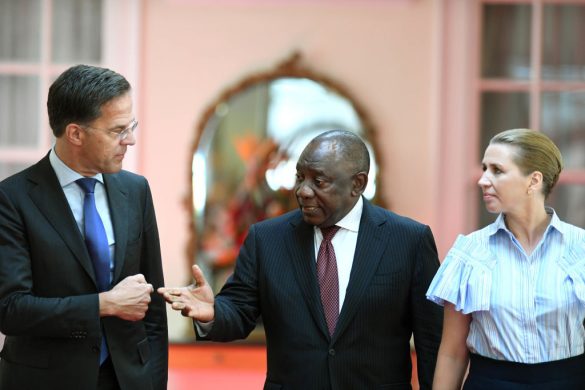Massedrabene er foregået i Minkebe Nationalpark i Gabon. Elfenbenskrigen spreder sig ud over Afrika, udtaler WWF, der beder det internationale samfund om at træde ind for at beskytte den afrikanske elefant inden det er for sent.
According to a study by the Gabonese National Parks Agency, WWF and the Wildlife Conservation Society (WCS), poachers have killed an estimated 11.100 elephants – between 44 to 77 per cent of the population.
This took in parts place of Minkébé’s National Park and its surroundings in northern Gabon since 2004, when it held Africa’s largest forest elephant population, writes WWF on their webpage Thursday.
“The situation is out of control. We are witnessing the systematic slaughter of the world’s largest land mammal (pattedyr),” said Bas Huijbregts, head of the Central African strand of WWF’s global campaign against illegal wildlife trade.
“Some reports lead the world to believe that the ivory war has moved from the Central Africa region to other parts of the continent. This is wrong. What has changed is that these criminals are now also attacking the better protected elephant herds in Eastern and Southern Africa.”
“But here in Central Africa, unnoticed to the world, elephants are losing this war at lightning speed.”
A regional crisis
Fiona Maisels, a conservation scientist at WCS who has been analyzing the survey data, said that the data pointed to a regional crisis.
“The Minkébé data are representative of trends across all remaining forest elephant strongholds in the region, not to speak of the neighbouring Republic of Congo (tidl. Fransk Congo), which is believed to hold 7.000 to 10.000 elephants, or less than ten per cent of its population twenty years ago,” Maisels explained.
“Gabon represents only about 13 per cent of the forests of Central Africa but is home to over half of Africa’s forest elephants”, she noted, adding:
“The Minkébé National Park, in turn, is home to Gabon’s biggest elephant population and to probably the largest forest elephant population in Africa. At least until these data came out”.
Læs videre på http://wwf.panda.org/wwf_news/?207520
Begynd fra: “Over in the Central African Republic…”
Tilføjelse U-landsnyt..dk
Et olieland, hvor 1/3 lever i dyb armod
Gabon’s economy is dominated by oil. Oil revenues comprise roughly 46 per cent of the government’s budget, 43 per cent of gross domestic product (GDP), and 81 per cent of exports.
Oil production is now declining rapidly from its high point of 370.000 barrels (tønder) per day in 1997. Some estimates suggest that Gabonese oil will be expended by 2025. In spite of the decreasing oil revenues, planning is only now beginning for an after-oil scenario.
Gabonese public expenditures from the years of significant oil revenues were not spent efficiently.
Overspending on the Transgabonais railroad, the oil price shock of 1986, the CFA franc devaluation of 1994, and low oil prices in the late 1990s caused serious debt problems that still plague the country.
Gabon’s oil revenues have given it a strong per capita GDP (indkomst pr. indbygger) of 8.600 US dollar, extremely high for the region. However the income distribution is skewed (skævt fordelt) and social indicators show poor values.
The richest 20 per cent of the population receive over 90 per cent of the income while about a third of the Gabonese population lives in poverty.
Gabon is situated on the Atlantic coast of Western Africa.
Kilde: Wikipedia














